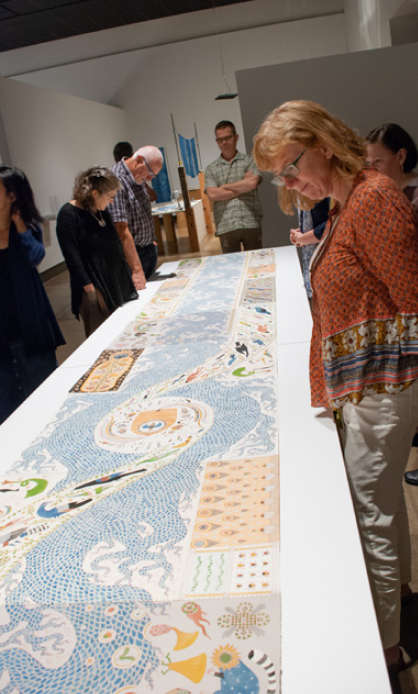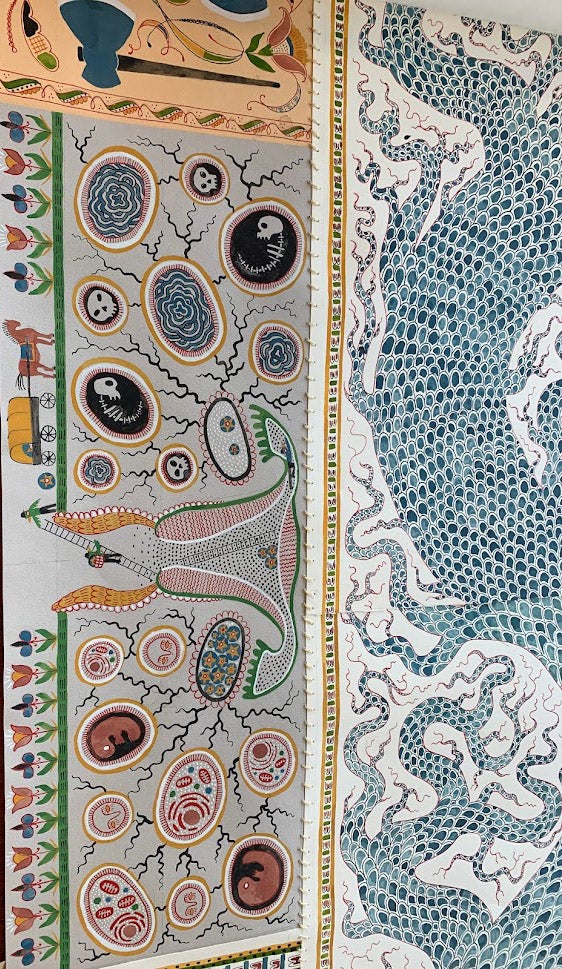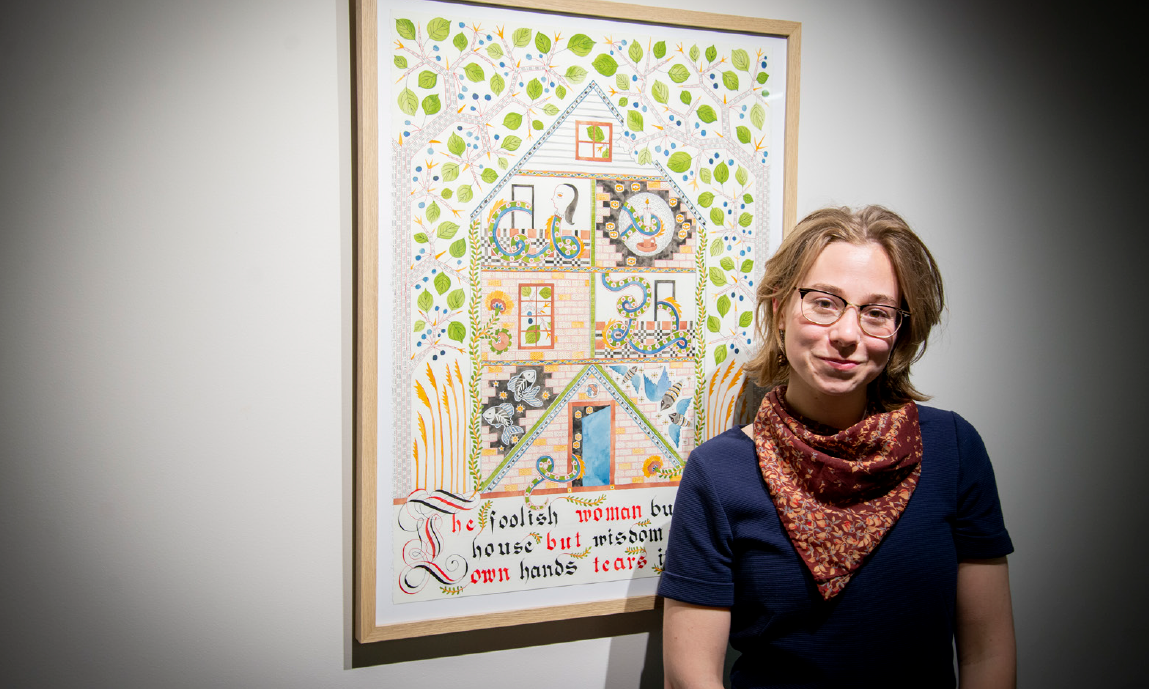About the Artwork

River Cycle is a 20-ft illuminated scroll composed of 34 individually illustrated panels. Collectively, they depict a reimagining of the biblical flood myth as an epic cyclical narrative of creation and destruction of a civilization along an infinite river of time, reframing the myth within the context of contemporary climate change, migration, the Grand River Watershed, and the colonial legacy that persists there.
This project was completed as part of the Vermont Studios Residency program and was exhibited at the Kitchener Waterloo Art Gallery (KWAG) in the exhibition, “The Brain is Wider Than the Sky” in 2018.
Donations to Grebel by patrons and alumni have made it possible to purchase this art as part of our art collection at the Mennointe Archives of Ontario.
For this exhibition, Crystal Mowry, senior curator at Kitchener-Waterloo Art Gallery, wrote about River Cycle in 2018:

Symbols and Images in River Cycle

Images to look for:
• Birds flying through central panels depict actual species that live or migrate through the region. How many can you identify?
• Another reappearing character is the European starling, an invasive bird known for evicting other birds from their nests.
• Other fantastical hybrid creatures are inspired by local flora and fauna such as morel mushrooms, wild leeks, and bloodroot.
• Some of the architectural drawing was inspired Waterloo Pioneer Memorial Tower and by church buildings that could be seen from Harder’s studio window in downtown Kitchener.
About the Artist

Meg Harder was born in and lives in St. Catharines, Ontario. She works across drawing, sculpture, installation, and experimental writing to explore themes of memory and identity.
Harder received her BA in Fine Arts from the University of Waterloo, which included six months of study and studio practice at Bazellel Academy of Art in Jerusalem, and her MFA from the University of Guelph.
Harder was the 2015 Eastern Comma Artist in Residence at Rare Charitable research reserve and has completed residencies at Banff Arts Centre, Oxbow School of Art, and the Vermont Studio Centre. She has exhibited at The Lincon Museum (Jordan), The Plum (Toronto), the Kitchener-Waterloo Art Gallery, CAFKA (Kitchener), and Peanuts Gallery (Vancouver). She was a recipient of a Waterloo Region Emerging Artist Award in 2019.